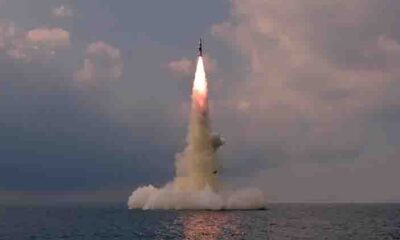While it could take more than a decade to develop, state-owned Swedish mining company LKAB said Thursday it uncovered Europe s largest known deposit of rare-earth elements, elements that are central components for the energy transition.
Rare-earth elements, along with lithium and cobalt, are essential for the batteries that power electric vehicles and other low-carbon technologies, though most of that is found outside of the Western, developed economies.
LKAB said it found a deposit in the Kiruna area of Sweden, above the Arctic Circle, that contains more than 1 million tons of rare-earth elements.
“This is the largest known deposit of rare-earth elements in our part of the world, and it could become a significant building block for producing the critical raw materials that are absolutely crucial to enable the green transition,” Jan Mostrom, president and CEO of LKAB, said.
Without sufficient supplies and without mines to extract these minerals, the energy transition would grind to a halt. The European Commission, for example, estimates the bloc will need to see a five-fold increase in rare-earth element supply to meet the expected increase in electric vehicles and wind turbines.
China, however, “completely dominates the market,” LKAB said, and the discovery in Europe will go a long way toward reducing the dependency on any single supplier, a problem the European Union is already working to address by looking for oil and gas suppliers other than Russia.
Dependency was an issue raised Thursday by Fatih Birol, the head of the International Energy Agency. The IEA estimates that the Democratic Republic of Congo currently produces 70% of the world s cobalt, used in lithium-ion batteries, while Australia, Chile and China account for 90% of the total global production of lithium.
There are no rare-earth mines in operation in Europe. LKAB said it s already started some preliminary work to tap the Kiruna deposit, dubbed Per Geijer, but permitting and developmental processes are slow.
“If we look at how other permit processes have worked within our industry, it will be at least 10-15 years before we can actually begin mining and deliver raw materials to the market,” Mostrom said.
While it could take more than a decade to develop, state-owned Swedish mining company LKAB said Thursday it uncovered Europe s largest known deposit of rare-earth elements, elements that are central components for the energy transition.
Rare-earth elements, along with lithium and cobalt, are essential for the batteries that power electric vehicles and other low-carbon technologies, though most of that is found outside of the Western, developed economies.
LKAB said it found a deposit in the Kiruna area of Sweden, above the Arctic Circle, that contains more than 1 million tons of rare-earth elements.
“This is the largest known deposit of rare-earth elements in our part of the world, and it could become a significant building block for producing the critical raw materials that are absolutely crucial to enable the green transition,” Jan Mostrom, president and CEO of LKAB, said.
Without sufficient supplies and without mines to extract these minerals, the energy transition would grind to a halt. The European Commission, for example, estimates the bloc will need to see a five-fold increase in rare-earth element supply to meet the expected increase in electric vehicles and wind turbines.
China, however, “completely dominates the market,” LKAB said, and the discovery in Europe will go a long way toward reducing the dependency on any single supplier, a problem the European Union is already working to address by looking for oil and gas suppliers other than Russia.
Dependency was an issue raised Thursday by Fatih Birol, the head of the International Energy Agency. The IEA estimates that the Democratic Republic of Congo currently produces 70% of the world s cobalt, used in lithium-ion batteries, while Australia, Chile and China account for 90% of the total global production of lithium.
There are no rare-earth mines in operation in Europe. LKAB said it s already started some preliminary work to tap the Kiruna deposit, dubbed Per Geijer, but permitting and developmental processes are slow.
“If we look at how other permit processes have worked within our industry, it will be at least 10-15 years before we can actually begin mining and deliver raw materials to the market,” Mostrom said.
Post Views: 80


 Fashion3 months ago
Fashion3 months ago
 Fashion3 months ago
Fashion3 months ago
 Sports2 months ago
Sports2 months ago
 Sports2 months ago
Sports2 months ago
 Fashion2 months ago
Fashion2 months ago
 pakistan2 months ago
pakistan2 months ago
 World3 months ago
World3 months ago






















